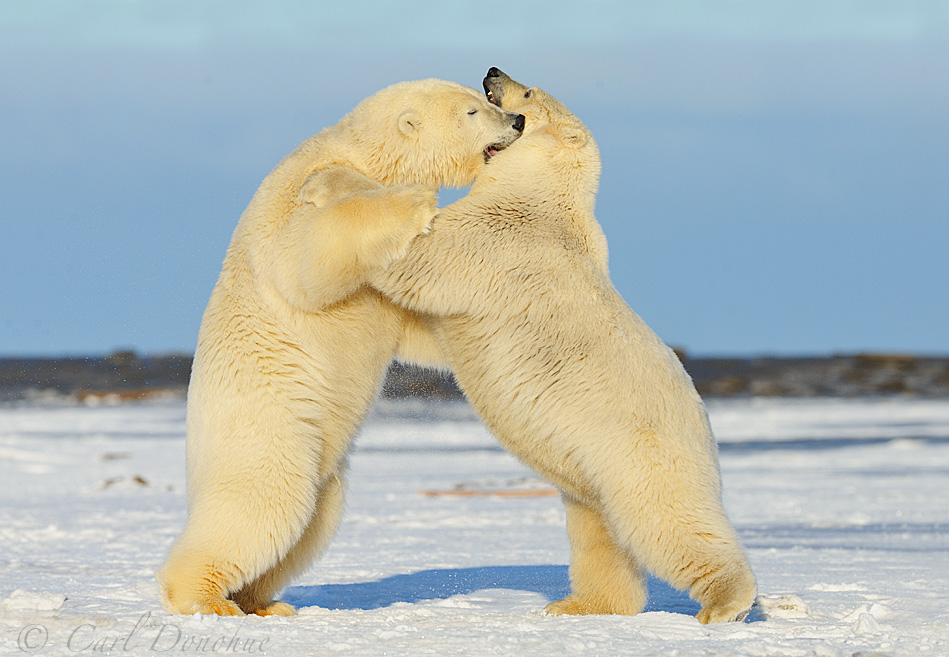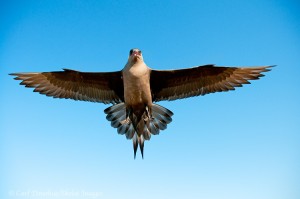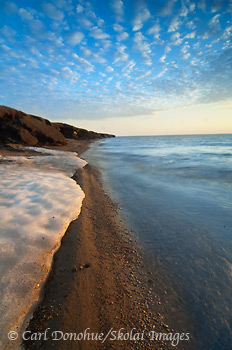
Polar bears at play


Hey Folks,
December 6, 2010, marks the 50th anniversary of the establishment of the Arctic National Wildlife Refuge, or ANWR, in Alaska. To commemorate this, and as a tribute to an amazing place, I’ve put together this slide show; 50 photos to mark the 50 years. These are all images from the Refuge, over 19 million acres of wild lands. The refuge is a treasure, home to thousands of creatures and features; the caribou herds, the Brooks Mountains, the broad coastal plain, migratory birds and countless other gifts to this world. A beautiful landscape that warrants our respect, not our exploitation.
I selected the images to present a the diversity of features and creatures that call the Refuge home, and composed and recorded the music to accompany it. I hope you enjoy it. Continue reading

Hey Folks,
One afternoon we hiked out around the coastal plain of the Arctic National Wildlife Refuge just because. We must’ve wandered a little close to a Jaeger nest, as this bird suddenly appeared from nowhere and made its displeasure known.
The Parasitic Jaeger is also called the Arctic Skua or the Parasitic Skua. While not a “parasite“, the bird is well known for it’s piracy of other birds’ food. Stealing food is often called “kleptoparasitism” by folks who like to use large prodigious words to describe simple, everyday stuff; scientists, for example.
Though solitary, they’ll often ‘gang up‘ on other birds to steal food. One of the folks on our trip, Steve Weaver, was witness to such an act, when he saw and photographed 4 Jaegers harassing a Red-throated loon, finally driving it from its nest and eating the eggs the loon had been defending. Amazing stuff.
The Jaeger isn’t simply a thief though – the bird also hunts for prey, such as rodents, small birds and insects – Jaeger is the German word for ‘hunter‘.
Parasitic Jaegers look kinda like a gull, but the wings and flight are more falconesque. Pelagic birds, they spend the bulk of their time at sea, coming ashore to breed. The young will often spend the first couple of years of their lives over the seas, not returning to land until they reach breeding age.
Some of you might recall the Long-tailed Jaeger photo I posted previously from a trip to the Arctic National Wildlife Refuge (ANWR) a couple of years ago. The Parasitic Jaegers are closely related, a little larger, but not so large as the Pomarine Jaeger.
Cheers
Carl

Hey Folks,
Another photo from our recent trip to the Arctic National Wildlife Refuge and the Beaufort Sea. I hiked from our final camp across the coastal plain (well, across part of the plain, not the whole thing) with Steve Weaver hoping to photograph some of the icebergs we’d seen the previous day along the shoreline. Unfortunately, strong southerly winds had blown almost all the ice out to sea, and we were largely thwarted. This patch of ice, however, had been resting on shore, stranded when the tide rolled out, and we made a few images.
Coastlines are such dynamic landscapes, and in the Arctic particularly so. They can change drastically in a day or less, and do so frequently.
This photo was taken around 1:15am .. maybe later. I think Steve and I arrived back at camp around 4:00am, and I went to bed at nearly 5:00am. up at 10:00am-ish to break camp, roll the raft, and wait for a bush plane. We arrived, finally, in Coldfoot, around 5:30pm,(the temp was 90deg F, a start contrast from the Arctic Ocean we’d just left) unpacked the gear from the plane, sorted it and loaded the van, ate dinner, and hit the road, rolling into the Yukon River area stop late at night. Then up early the next morning to drive from there to Anchorage. 36 hours later it was out the door to pick up folks for the next trip to Wrangell-St. Elias National Park and Preserve. Summertime can be like that in Alaska.
I’ve been out to the Beaufort Sea here a number of times, now every time I’ve been so fortunate as to have an absolutely glorious final evening. The wind wasn’t bad at all, the bugs had quieted down, and the expansive vastness of the place really moves me. It’s a fantastic experience, to see such a harsh and rugged environment also be so sensitively fragile; the quiet tundra, the shorebirds, a whisper of air and the glowing rays of the sun, low on the horizon. After the trek back to camp I simply couldn’t go to bed, but sat for nearly 45 minutes by my tent, just watching, listening and enjoying the grace of the Arctic coastal plain. It’s a phenomenal place.
The bluffs on the left of the frame, like Castles Made of Sand, slowly slip into the sea – eventually.
Cheers
Carl